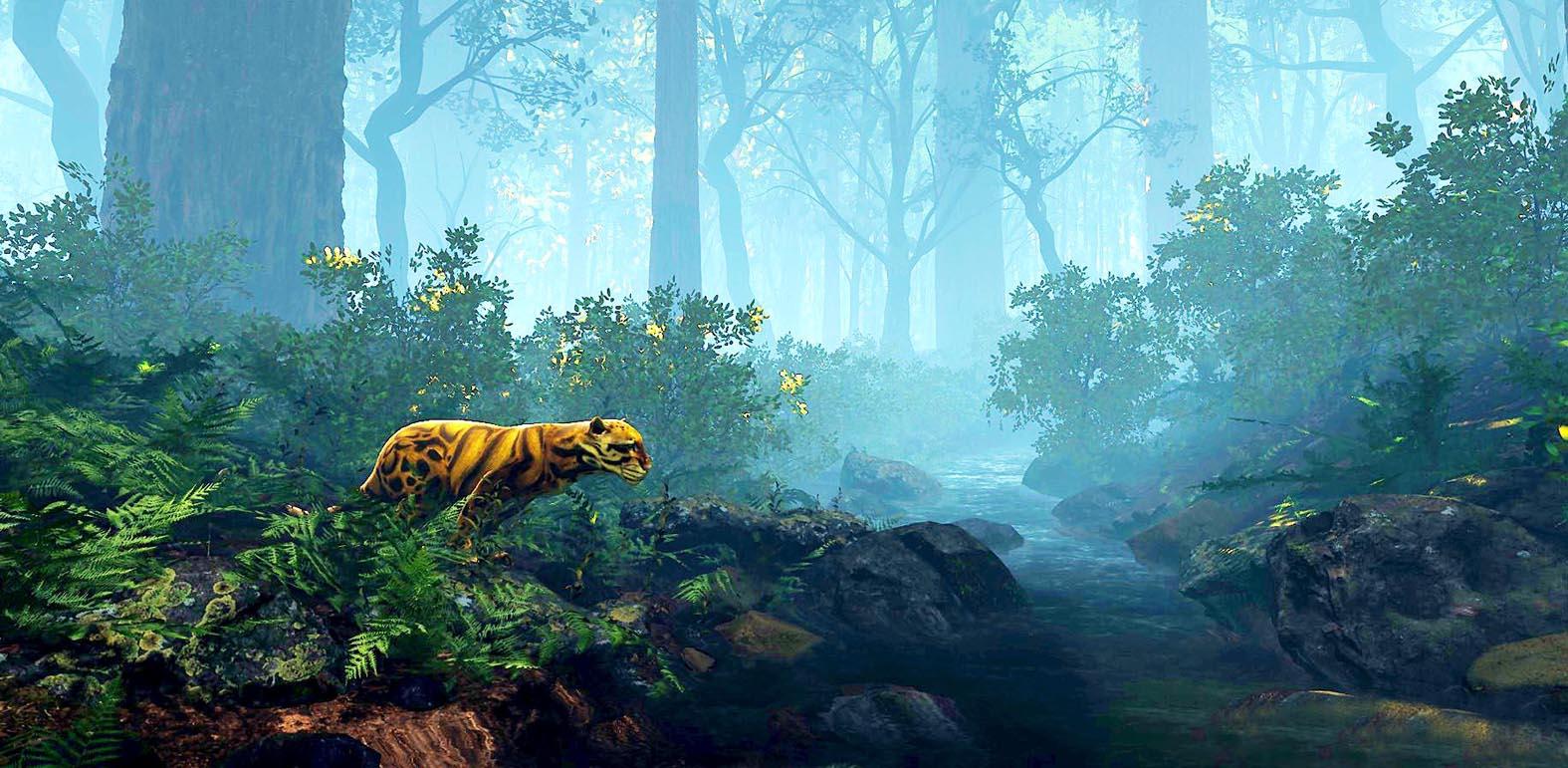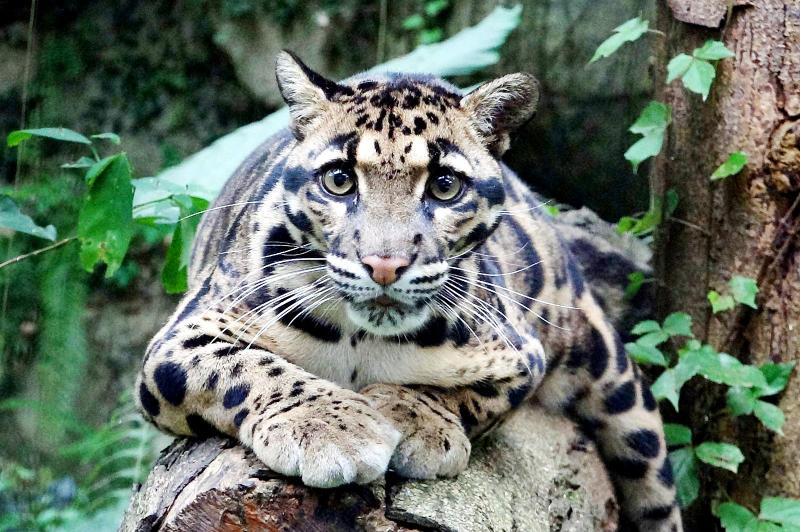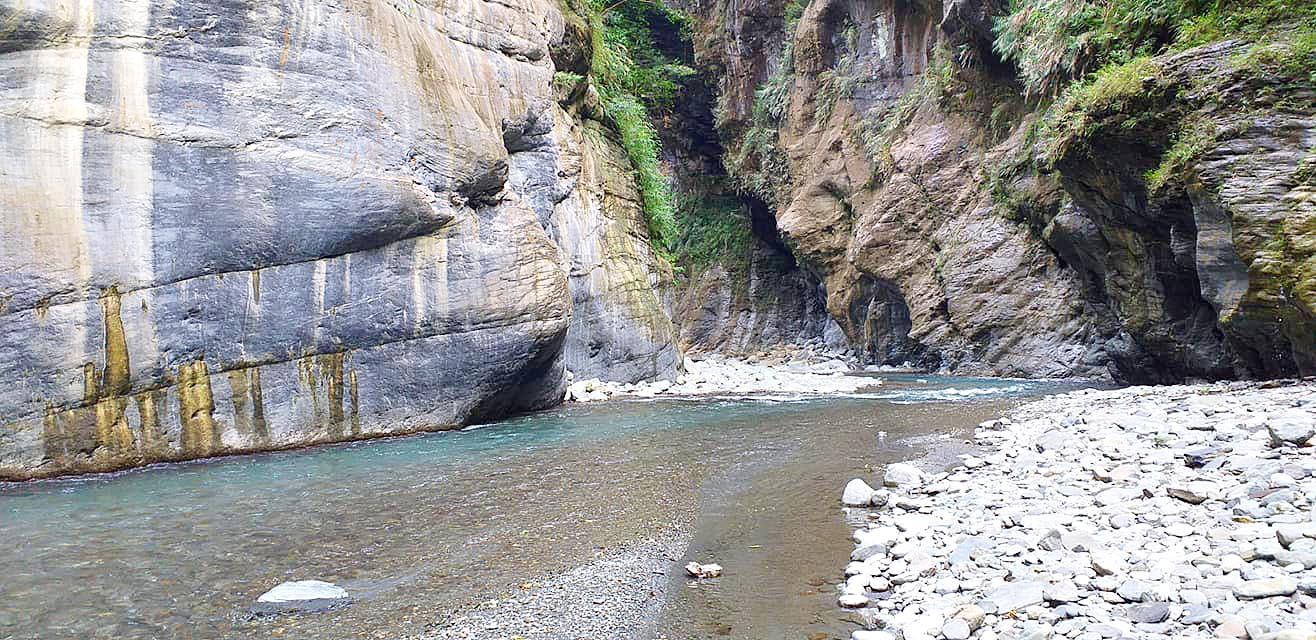Whether or not the Formosan clouded leopard still exists in some hidden mountain fastness somewhere in Taiwan is a question that has fascinated the scientific community for many years. Taiwanese researchers attempted to put the question to rest a decade ago by scouring the Dawushan Nature Reserve (大武山) in Taitung County, but came back empty-handed.
The survey ran from 1997-2012 and used over a thousand camera traps, but did not turn up a single cat, and the species was declared extinct in 2013. Renowned Taiwanese conservationists Chiang Po-jen (姜博仁) and Kurtis Pei (裴家騏) conducted the field work and published a definitive paper on the failed hunt.
In short, clouded leopards were not found, but prey species abound and, surprisingly, many Taiwanese are supportive of reintroduction. Yet it may still lurk out there, just not where scientists think, and finding it might require a different approach.

Photo courtesy of the National Taiwan Museum
SEARCHING FOR A LEOPARD
Chiang and his team used standard and rigorous scientific methodology, laying out their camera stations in a grid style, which is widely used in conservation today. However, finding a rare and cryptic species might be more of an art than a science.
Chiang, Pei and their colleagues are — unlike myself — trained scientists. Nonetheless, I’ve organized and led wildlife camera trap surveys in Cambodia, Thailand and Indonesia, and we found clouded leopards in all of our study sites, one of which (in Sumatra) is not even a protected area but a leftover land of isolated mountains and gorges.

Photo courtesy of Taipei Zoo
In the challenging terrain of Southeast Asia, and with a very limited number of camera traps, intuition trumped science when choosing camera stations. A study of maps and reconnaissance trips into the deep interior to get a feeling for the place was our basic approach.
We went in search of haunted headwaters where access was difficult and where trails were few, and where animist beliefs trumped Islamic faith. We would explore, and get a feeling. Could tigers roam here? How about clouded leopards? Some places felt magical, and that’s where cameras went.
The surveys turned up: Sumatran tiger and Sunda clouded leopard (in Sumatra); we rediscovered Asian elephants in Virachey National Park in Cambodia in an area that one ranger insisted was a waste of time, and those cameras recorded clouded leopard too; finally, clouded leopards were on most of our camera traps in Thailand.

Photo: Gregory McCann
Taiwan’s Jhiben Gorge (知本) is so vast and so untouched by humans that it is at least possible to imagine that a small population of Formosan clouded leopards persists. This area is upriver from the hot springs, a place the late Lonely Planet Taiwan author Robert Story described as “the closest to Nirvana as you’re likely to get.”
Another Taiwanese conservationist said over coffee a few months back that the Jhiben Gorge of Taitung hadn’t been surveyed in 25 years. Pei told me a few years back that the Jhiben River was the last place otters were found on Taiwan.
And so I headed to Jhiben last month. I hadn’t visited since January 2009, and I heard from multiple sources that Typhoon Morakot of August later that year obliterated sections of the canyon, collapsing entire mountains, as well as hotels. I didn’t know what to expect.
A TUMBLE DOWN
An old friend who I had brought down to Jhiben back in 2003 was already there ahead of me and was in the midst of a 5-day solo river-trace up the canyon. I hoped to find him while conducting day hikes.
I spent the first day getting as far up the river as I could, keeping an eye out for possible camera stations. I only had two camera traps on me and I would only be setting them up for a couple of days as I didn’t have permission. I espied many enticing locales.
The gorge is now much more walkable than it used to be, with narrow sections of warped rock canyon having been blown out by Morakot and turned to rocky beaches. Pausing to look at what appeared to me to be a small game trail near the top of a bulge of rock at the base of a cliff, I took off my bag and clambered up the slippery surface, sliding down more than once, but finally reaching the root of a tree I had in mind as a camera anchor.
Images of pangolin, Siberian weasel, masked palm civet and clouded leopard flashed through my mind. It was not easy to get the camera properly angled down, so I began reaching for sticks to jam behind it, lost my balance and tumbled 20 feet down.
At the bottom, I rolled through underbrush and came upon a serow skull. I eventually got the cam set and later came upon another spot that caught my eye, so I climbed up there and deployed. (In two days, I got a mere three “ghost shots.”)
KEEP ON LOOKING
Cams set, I continued, finding new paradise waterfalls I had never seen before, as well as countless crystal blue pools. At 4pm I stopped, and wrote my name in the sand, hoping my friend would see it whenever he hiked out. Next day, I went back and got the cams and continued tracing the river.
Striated herons, brown dippers, plumbeous redstarts, wagtails, common kingfishers and crested serpent eagles kept us company on our joyful trek out, and macaques and wildlife numerous footprints created the impression of a luxuriously pristine ecosystem.
Having visited Dawushan Nature Reserve several days later on the same trip, there isn’t a doubt in my mind that the Jhiben Gorge has much more of the magical feel that I know from Southeast Asia, and perhaps with a couple dozen camera traps, the clouded leopard can be rediscovered before it is reintroduced.

This is the year that the demographic crisis will begin to impact people’s lives. This will create pressures on treatment and hiring of foreigners. Regardless of whatever technological breakthroughs happen, the real value will come from digesting and productively applying existing technologies in new and creative ways. INTRODUCING BASIC SERVICES BREAKDOWNS At some point soon, we will begin to witness a breakdown in basic services. Initially, it will be limited and sporadic, but the frequency and newsworthiness of the incidents will only continue to accelerate dramatically in the coming years. Here in central Taiwan, many basic services are severely understaffed, and

Jan. 5 to Jan. 11 Of the more than 3,000km of sugar railway that once criss-crossed central and southern Taiwan, just 16.1km remain in operation today. By the time Dafydd Fell began photographing the network in earnest in 1994, it was already well past its heyday. The system had been significantly cut back, leaving behind abandoned stations, rusting rolling stock and crumbling facilities. This reduction continued during the five years of his documentation, adding urgency to his task. As passenger services had already ceased by then, Fell had to wait for the sugarcane harvest season each year, which typically ran from

It is a soulful folk song, filled with feeling and history: A love-stricken young man tells God about his hopes and dreams of happiness. Generations of Uighurs, the Turkic ethnic minority in China’s Xinjiang region, have played it at parties and weddings. But today, if they download it, play it or share it online, they risk ending up in prison. Besh pede, a popular Uighur folk ballad, is among dozens of Uighur-language songs that have been deemed “problematic” by Xinjiang authorities, according to a recording of a meeting held by police and other local officials in the historic city of Kashgar in

The People’s Republic of China (PRC) was out in force in the Taiwan Strait this week, threatening Taiwan with live-fire exercises, aircraft incursions and tedious claims to ownership. The reaction to the PRC’s blockade and decapitation strike exercises offer numerous lessons, if only we are willing to be taught. Reading the commentary on PRC behavior is like reading Bible interpretation across a range of Christian denominations: the text is recast to mean what the interpreter wants it to mean. Many PRC believers contended that the drills, obviously scheduled in advance, were aimed at the recent arms offer to Taiwan by the